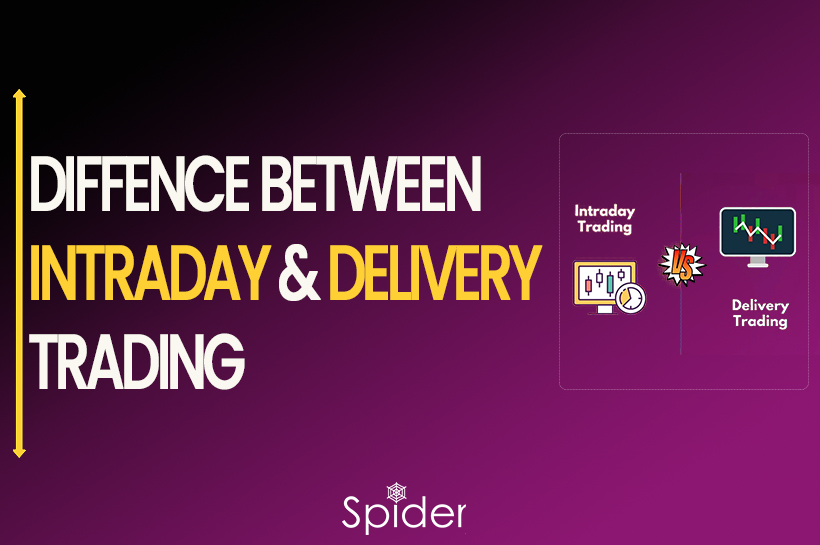Stock market has various methods – some are for quick buying and selling, others are for long-term investing.

What is Intraday Trading
Intraday trading, commonly referred to as day trading, involves the buying & selling of shares within the same trading day. Traders open and close positions before the market closes, aiming to profit from the price fluctuations of the shares during the day.
Intraday traders often utilize a trading strategy known as leverage, which enables them to invest more than their actual capital. This increased investment potential can lead to higher returns on their trades. Stockbrokers offer this leverage to traders in accordance with margin guidelines established by SEBI.

Advantages of Intraday Trading
Intraday trading, also known as day trading, allows for margin usage, which boosts position size with minimal capital requirements a concept often referred to as leverage.
Due to the leverage involved, intraday traders have the potential to profit even with small initial investments.
In intraday trading, short selling is used.
Traders can profit from both the uptrend & down trend and make the best of the analysed opportunities.
Disadvantages of Intraday Trading
Intraday trades settle within a day, limiting traders’ opportunities to ride the full market wave, and sometimes prices may not move enough for profitable trading.
Due to the short time frame in intraday trading, if prices move against the trader’s position, they may be forced to close the trade by day’s end, even if it means taking a loss without waiting for a rebound.
In intraday trading, you don’t retain the stock on dividend, bonus, rights issue, or stock split record dates.
What is Delivery Trading
In delivery transactions, investors have the flexibility to hold shares for a longer period, ranging from a few days to several decades, based on their preference, without the need to buy and sell on the same day.

Advantages of Delivery Trading
There is no specified timeframe or deadline imposed for selling stocks. Investors have the freedom to decide when they want to sell their stocks without any time constraints.
Owning a share comes with added advantages, including the potential for receiving dividends, bonus shares, and the right to vote in corporate matters.
Market volatility typically exerts only a slight impact on your investment, and in most cases, delivery traders ride out such phase.
You don’t need to commit your entire time to the constant analysis and monitoring of your investments.
Disadvantages of Delivery Trading:
Your capital is locked for long periods.
You have to pay full price of the share to take the position in delivery trading
Conclusion
In conclusion, intraday trading suits those seeking quick profits with leverage, while delivery trading is for long-term investors looking for stability and benefits like dividends, but it requires a longer-term commitment. Your choice depends on your investment goals and risk tolerance.
Join our upcoming Master-Class on Trading Potential on Monthly Expiry days

Also, Check Zero to Hero Option Trading Strategy (80% ACCURACY) – 2023
Disclaimer: The information provided in this Blog is for educational purposes only and should not be construed as financial advice. Trading in the stock market involves a significant level of risk and can result in both profits and losses. Spider Software & Team does not guarantee any specific outcome or profit from the use of the information provided in this Blog. It is the sole responsibility of the viewer to evaluate their own financial situation and to make their own decisions regarding any investments or trading strategies based on their individual financial goals, risk tolerance, and investment objectives. Spider Software & Team shall not be liable for any loss or damage, including without limitation any indirect, special, incidental or consequential loss or damage, arising from or in connection with the use of this blog or any information contained herein.




